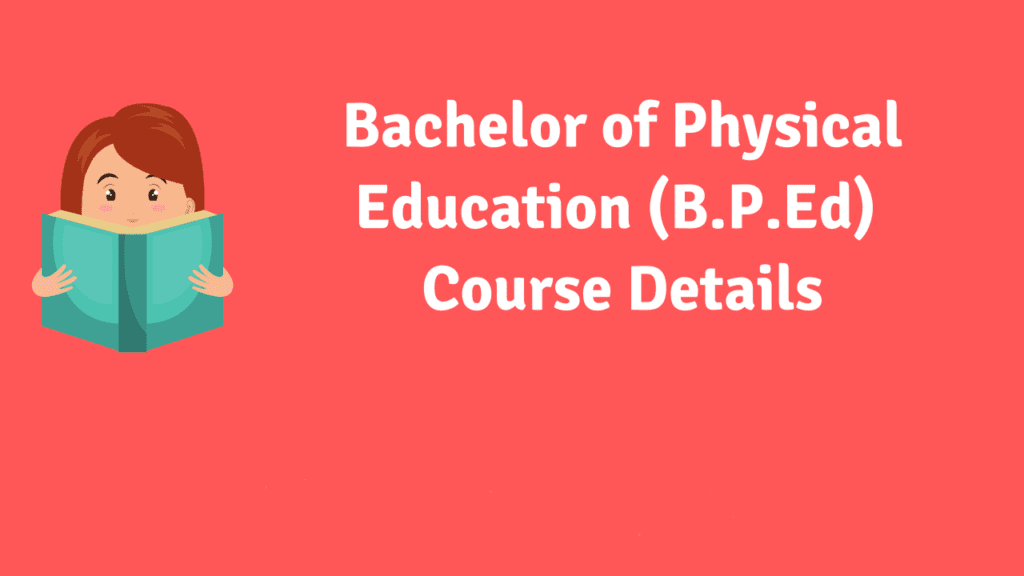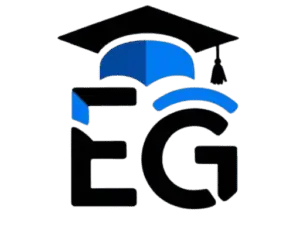DEPARTMENT OF PHYSICAL EDUCATION SYLLABUS OF EXAMINATION B. P. ED. PROGRAMME

CC- 101 HISTORY, PRINCIPLES AND FOUNDATION OF PHYSICAL EDUCATION CC- 102 ANATOMY AND PHYSIOLOGY CC- 103 HEALTH EDUCATION AND ENVIRONMENTAL STUDIES EC- 101 OLYMPIC MOVEMENT (ELECTIVE) EC- 102 OFFICIATING AND COACHING (Elective)
SEMESTER – I
CC-101 HISTORY, PRINCIPLES AND FOUNDATION OF PHYSICAL EDUCATION
Course Objective:
This course will enable students to understand the meaning, nature, need and scope of physical education and sports. Study about the scientific principles from various allied subjects in the field of physical education and sports. Describe the national Programmes of physical education and sports and youth welfare Programmes in the field of physical education and sports; and analyze the historical review of physical education and sports activities of Indian heritage.
Course Outcomes:
After completing this course, the students will be able to
- 1. Understand the wholesome development of the human being through various theories of physical Education
- 2. Articulate the scientific relationship of physical Education with other related science.
- 3. Critically analyze the values of related national programs with sports bodies.
- 4. Estimate Impact of Olympic movement and international understanding through physical Education and sports.
- 5. Design the physical education programme in comparison with different growth and development.
Unit –I Introduction
- Meaning, Definition and Scope of Physical Education
- Aims and Objective of Physical Education
- Importance of Physical Education in present era
- Misconceptions about Physical Education
- Relationship of Physical Education with General Education
- Physical Education as an Art and Science
Unit-II Historical Development of Physical Education in India
- Indus Valley Civilization Period. (3250 BC – 2500 BC)
- Vedic Period (2500 BC – 600 BC)
- Early Hindu Period (600 BC – 320 AD) and Later Hindu Period (320 AD – 1000 AD)
- Medieval Period (1000 AD – 1757 AD)
- British Period (Before 1947) Physical Education in India (After 1947)
- Contribution of IOA.
Unit- III Foundation of Physical Education
- Philosophical foundation: Idealism, Pragmatism, Naturalism, Realism, Humanism,
- Existentialism and Indian Philosophy and Culture
- Modern Olympic Games
- Para Olympic Games
Unit-IV Principles of Physical Education
- Biological – Growth and development
- Age and gender characteristics –
- Body Types
- Anthropometric differences
- Psychological -Learning types, learning curve
- Laws and principles of learning
- Attitude, interest, cognition, emotions and sentiments
- Sociological – Society and culture
- Social acceptance and recognition
- Leadership-Social integration and cohesiveness
CC-102 ANATOMY AND PHYSIOLOGY
Course Objective: The objective of this course is to introduce the students about the Anatomy and Physiology; its importance in the field of physical education and sports. To understand how the structure and function of the body are related to each other. The students will understand the structure and function of various systems of the human body.
Course outcomes: Specific skills and competencies expected of students who complete this course include the following:
- 1. It is expected that the students will be able to know the importance of Anatomy and physiology in the area of physical education and sport.
- 2. It is expected that students able to understand about cell, tissue, skeletal system and various types of joints found in the human body.
- 3. Use correct terminology to discuss the components and functions of blood, as well as the formation and anatomy of blood cells.
- 4. Identify and explain the structure and functions of each body system.
- 5. At the end of the semester it is expected that the students will be able to use correct terminology to discuss the anatomical terms.
- 6. It is expected that the students will be able to understand the anatomy and physiology of Circulatory, Respiratory, Digestive, Excretory, Endocrine and Nervous system for the smooth functioning of human body.
- 7. It is expected that the students will be able to understand about the structure, composition, properties and functions of skeletal muscles.
- 8. It is expected that students will be able to understand about importance of physical fitness, warming up, conditioning, fatigue and diet.
UNIT-I
- Brief Introduction of Anatomy and physiology in the field of Physical Education.
- Importance of Anatomy and Physiology
- Introduction of Cell and Tissue.
- The arrangement of the skeleton – Function of the skeleton – Ribs and Vertebral column and the extremities.
- Joints of the body and their types
- Gender differences in the skeleton.
- Types of muscles.
UNIT-II
- Circulatory system: Constituents of blood and their function –Blood groups, clotting of blood, the structure of the heart, circulation of blood, cardiac cycle, blood pressure, Lymphatic circulation, Cardiac output.
- The Respiratory system: The Respiratory passage – the lungs and their structure and exchange of gases in the lungs, mechanism of respiration (internal and external respiration) lung capacity, tidal volume.
- The Digestive system: structure and functions of the digestive system, Digestive organs, Metabolism, The Excretory system: Structure and functions of the kidneys and the skin.
- The Endocrine glands: Functions of glands pituitary, Thyroid, Parathyroid. Adrenal, Pancreatic and the sex glands.
- Nervous systems: Parts of the brain, Function of the Autonomic nervous system and Central nervous system. Reflex Action,
- Sense organs: A brief account of the structure and functions of the Eye and Ear.
UNIT-III
- Definition of physiology and its importance in the field of physical education and sports.
- Structure, Composition, Properties and functions of skeletal muscles.
- Nerve control of muscular activity: Neuromuscular junction &Transmission of nerve impulse across it. Fuel for muscular activity
- Basic energy requirement for physical activity
- Role of oxygen- Oxygen debt, second wind, vital capacity.
UNIT-IV
- Effect of exercise and training on cardiovascular system.
- Effect of exercise and training on respiratory system.
- Effect of exercise and training on muscular system
- Physiological concept of physical fitness, warming up, conditioning and fatigue.
- Basic concept of balanced diet – Diet before, during and after competition.
CC-103 HEALTH EDUCATION AND ENVIRONMENTAL STUDIES
Course Objective: The objective of this course is to make teachers capable of imparting basic knowledge about introduce the students about the health and its dimensions, scope, parameters and health problems etc.
Course Outcomes: After completing this course, the students will be able to
- 1. The student will be able to identify and synthesize the factors that influence health.
- 2. The student will be able to recognize the health related problems/challenges in current time and able to apply the preventive measures.
- 3. The student will be able to understand Personal and Environmental Hygiene for schools
- 4. The student will be able to understand natural resources and related environmental issues.
Unit – I Health Education
- Concept, Dimensions, Spectrum and Determinants of Health
- Definition of Health, Health Education, Health Instruction, Health Supervision
- Aim, objective and Principles of Health Education
- Health Service and guidance instruction in personal hygiene
Unit – II Health Problems in India
- Communicable and Non Communicable Diseases
- Obesity, Malnutrition, Adulteration in food, Environmental sanitation, Explosive Population,
- Personal and Environmental Hygiene for schools
- Objective of school health service, Role of health education in schools
- Health Services – Care of skin, Nails, Eye health service, Nutritional service,
- Healthappraisal, Health record, Healthful school environment, first- aid and emergency care etc.
Unit – III Environmental Science
- Definition, Scope, Need and Importance of environmental studies.
- Concept of environmental education, Historical background of environmental education,
- Celebration of various days in relation with environment.
- Plastic recycling & probation of plastic bag / cover.
- Role of school in environmental conservation and sustainable development.
Unit – IV Natural Resources and related environmental issues:
- Water resources, food resources and Land resources
- Definition, effects and control measures of:
- Air Pollution, Water Pollution, Soil Pollution, Noise Pollution, Thermal Pollution
- Management of environment and Govt. policies, Role of pollution control board.
EC-101 OLYMPIC MOVEMENT (ELECTIVE)
Course Objective:
To make teachers capable of imparting basic knowledge about philosophy of olympic movements. Also provide knowledge about ethics, different olympic games etc. so that the student teacher can cater best knowledge to his or her students in their future endeavours.
Course Outcomes:
- 1. The students would be oriented with the rules regulations of the indigenous game and Gymnastics.
- 2. The students would be able to lay out and mark the dimensions of the court.
- 3. The students would be able to organize the concerned sports event and officiate in it.
- 4. The students would be oriented in the art of coaching the sports team.
Unit – I Origin of Olympic Movement
- Philosophy of Olympic movement
- The early history of the Olympic movement
- The significant stages in the development of the modern Olympic movement
- Educational and cultural values of Olympic movement
Unit – II Modern Olympic Games
- Significance of Olympic Ideals, Olympic Rings, Olympic Flag
- Olympic Protocol for member countries
- Olympic Code of Ethics Olympism in action
- Sports for All
Unit – III Different Olympic Games
- Para Olympic Games
- Summer Olympics
- Winter Olympics
- Youth Olympic Games
Unit – IV Committees of Olympic Games
- International Olympic Committee – Structure and Functions
- National Olympic committees and their role in Olympic movement
- Olympic commission and their functions
- Olympic medal winners of India
EC-102 OFFICIATING AND COACHING (Elective)
Course Objective:
To make teachers capable of imparting basic knowledge about rules, officiating and coaching of games and sports. Also develop skills and competencies to organize school and University level games and sports.
Course Outcomes:
- 1. The students would be oriented with the rules regulations of the indigenous games.
- 2. The students would be able to understand the role of a coach as a mentor..
- 3. The students would be able to organize the concerned sports event and officiate in it.
- 4. The students would be oriented with the qualities and duties of officials.
Unit- I: Introduction of Officiating and coaching
- Concept of officiating and coaching
- Importance and principles of officiating
- Relation of official and coach with management, players and spectators
- Measures of improving the standards of officiating and coaching
Unit- II: Coach as a Mentor
- Duties of coach in general, pre, during and post game.
- Philosophy of coaching
- Responsibilities of a coach on and off the field
- Psychology of competition and coaching
Unit- III: Duties of Official
- Duties of official in general, pre, during and post-game.
- Philosophy of officiating
- Mechanics of officiating – position, singles and movement etc.
- Ethics of officiating
Unit- IV: Qualities and Qualifications of Coach and Official
- Qualities and qualification of coach and official
- General rules of games and sports
- Eligibility rules of intercollegiate and inter-university tournaments, preparation of TA,
- DA bills
- Integrity and values of sports
